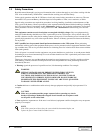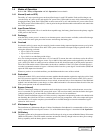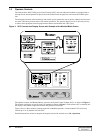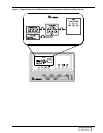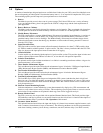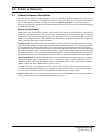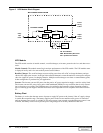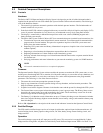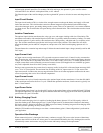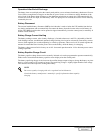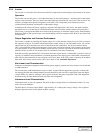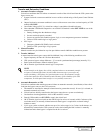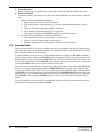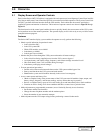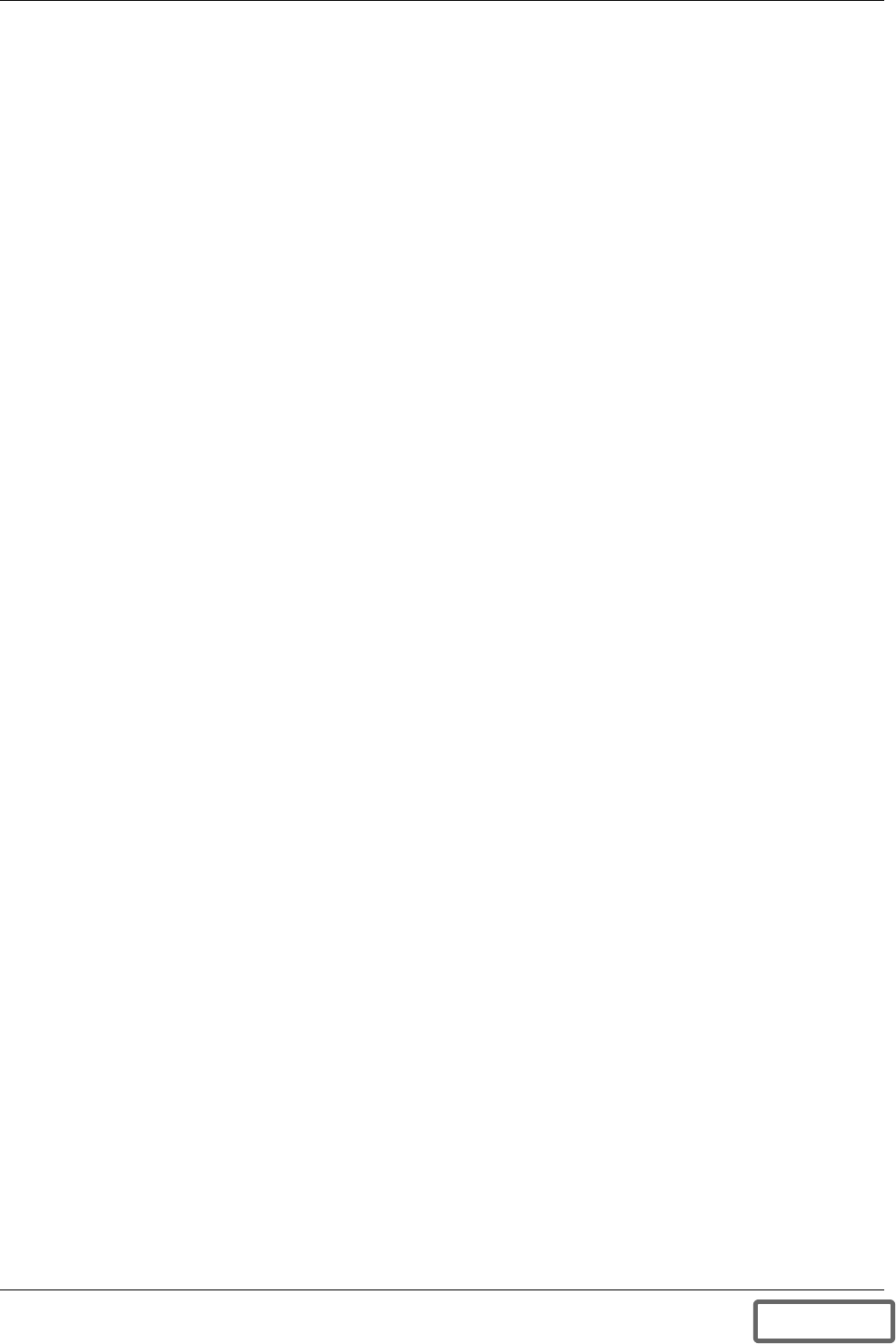
16 Theory of Operation
full load with optional input filter. For modules 500 kVA and larger, the optional 12-pulse rectifier reduces
reflected THD to less than 4% with optional filter, or 9% without.
The filtered output of the rectifier/charger provides regulated DC power to drive the inverter and charge the bat-
tery.
Input Circuit Breaker
The input circuit breaker (CB1) is sized to allow enough current to recharge the battery and supply a full rated
load at the same time. The circuit breaker contains a thermal magnetic trip mechanism and an undervoltage
release that interrupts power, preventing damage to the system, if there is an internal AC over-current condition
or a short circuit. The circuit breaker also opens during certain alarmed faults. This circuit breaker must be closed
manually.
Isolation Transformer
The optional input isolation transformer has a dry type core, and copper windings with class H insulation. The
transformer on modules with standard 6-pulse rectifier has wye primary and delta secondary windings. For mod-
els with the optional 12-pulse rectifier, the transformer has a delta primary, with delta and wye secondary wind-
ings. The isolation transformer provides the initial step of critical bus isolation. This reduces the AC shock
hazard at the battery and at other DC components, and prevents a DC fault from disrupting upstream AC cir-
cuitry.
The transformer has a nominal tap and one tap 6% below the rated nominal input voltage (normally used for 460
VAC input).
Input Current Limit
AC input current-sensing transformers (CTs) are used to measure current levels. Control circuitry connected to
the CTs restricts the AC current to less than 125% of the full input current rating by reducing the battery charging
voltage. This current limit is adjustable from 100 to 125% and is factory set at 115%. A second (optional) level
of input current limit can be initiated by an external contact closure (field supplied for use with back-up genera-
tor), and is adjustable from 85 to 100% (factory set at 100%).
During a start-up procedure, the current slowly ramps up (walks-in) from 20% of the rated input current to 100%
over a 15 to 21 second period. The maximum rate of change of the AC input current is 15% per second. The
input current walk-in reduces the start-up surge distortion effects on all other equipment connected to the same
source and prolongs the service life of internal components.
Input Current Inrush
The maximum sub-cycle of inrush current due to the optional input isolation transformer is less than 500-800%
of the rated input current for the first 1/2 cycle. Without the optional transformer, inrush current is typically less
than 2-3 times normal.
Input Power Factor
The rated input power factor is no less than 0.85 lagging at the nominal input voltage and the full rated UPS load.
The optional input filter will improve the power factor to better than 0.92 lagging at full load. Refer to published
specifications for your UPS model.
2.2.3 Battery Charging Circuit
The UPS module charging circuit is capable of recharging the battery plant to 95% of full capacity within 10
times the discharge time. Recharging the last 5% takes longer because of characteristics inherent in the battery.
DC ripple voltage is limited to less than 0.5% RMS to preserve battery life during long-term float charging while
the UPS system is operating on utility source power.
Multiple UPS module rectifier/chargers can share a common battery plant, if that configuration is preferred for
your application.
Operation After Discharge
When commercial power is interrupted, the battery continues to supply DC power to the inverter without inter-
ruption to the critical load. If the AC source power is restored before the battery has fully discharged, the rectifier
automatically restarts and resumes carrying the inverter and battery recharge load requirements.
DISCONTINUED
PRODUCT



